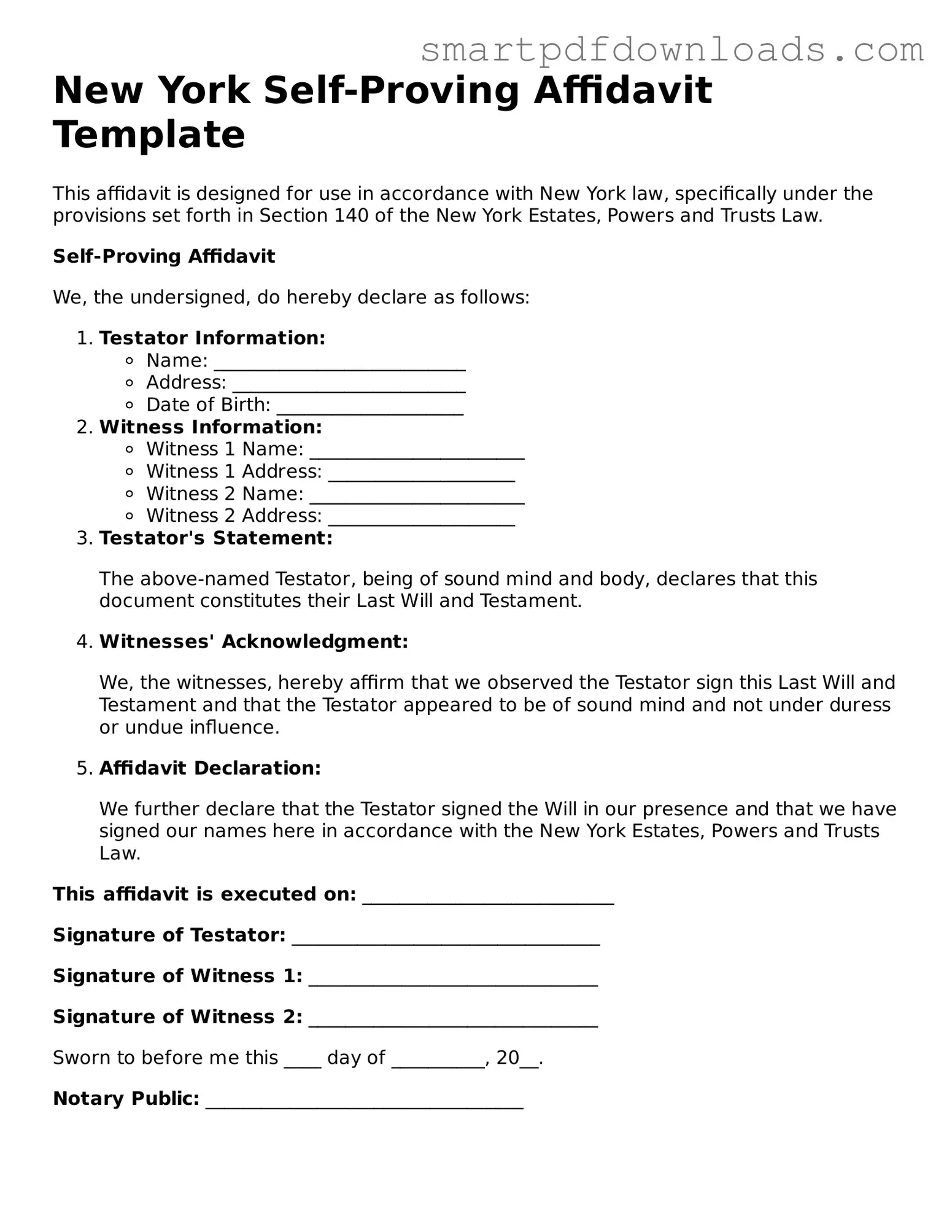New York Self-Proving Affidavit Template
This affidavit is designed for use in accordance with New York law, specifically under the provisions set forth in Section 140 of the New York Estates, Powers and Trusts Law.
Self-Proving Affidavit
We, the undersigned, do hereby declare as follows:
- Testator Information:
- Name: ___________________________
- Address: _________________________
- Date of Birth: ____________________
- Witness Information:
- Witness 1 Name: _______________________
- Witness 1 Address: ____________________
- Witness 2 Name: _______________________
- Witness 2 Address: ____________________
- Testator's Statement:
The above-named Testator, being of sound mind and body, declares that this document constitutes their Last Will and Testament.
- Witnesses' Acknowledgment:
We, the witnesses, hereby affirm that we observed the Testator sign this Last Will and Testament and that the Testator appeared to be of sound mind and not under duress or undue influence.
- Affidavit Declaration:
We further declare that the Testator signed the Will in our presence and that we have signed our names here in accordance with the New York Estates, Powers and Trusts Law.
This affidavit is executed on: ___________________________
Signature of Testator: _________________________________
Signature of Witness 1: _______________________________
Signature of Witness 2: _______________________________
Sworn to before me this ____ day of __________, 20__.
Notary Public: __________________________________
